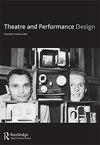通过虚拟模型制作世界
Q2 Arts and Humanities
引用次数: 0
摘要
本文是一个大型研究项目的一部分,该项目旨在研究戏剧和建筑模式的独特谱系和独特属性。当前的研究建立在作者早期对物理模型的考虑之上,并将其观察的重点转移到虚拟模型和由此产生的虚拟世界上。在《作为表现的模型》(Bloomsbury, 2018)中,我们确定了模型的表现和认知品质,并论证了物理模型的独特能力,以实现和激发宇宙创造或“世界制造”和“世界建模”的行为。随着其对虚拟模型的关注,当前的项目旨在发展两个相互关联和假设的调查线索。第一种方法确定了虚拟模型在世界构建方面的独特能力。另一种分离了它的表演性和认识性。两者都需要对物理和虚拟模型进行定位,以阐明它们的互连和区别元素。同样,这两个方面都要求模型的理论定位趋向于“真实”。本文章由计算机程序翻译,如有差异,请以英文原文为准。
Worldmaking through the virtual model
ABSTRACT This article forms part of a larger research project that examines the distinct genealogies and unique properties of the theatre and architecture model. The current research builds on the authors’ earlier consideration of the physical model and shifts its focus of observation to the virtual model and the resultant virtual worlds. In The Model as Performance (Bloomsbury, 2018), we identify the model’s performative and epistemic qualities and argue for the unique capacity of the physical model to enable and provoke acts of cosmopoiesis or ‘worldmaking’ and ‘worldmodelling’. With its focus on the virtual model, this current project aims to develop two interrelated and hypothetical strands of inquiry. The first one ascertains the virtual model’s unique capacity for worldmaking. The other isolates its performative and epistemic qualities. Both require a positioning towards the physical and virtual model to articulate their elements of interconnection and distinction. Equally, both aspects demand the model’s theoretical positioning towards the ‘real’.
求助全文
通过发布文献求助,成功后即可免费获取论文全文。
去求助
来源期刊

Theatre and Performance Design
Arts and Humanities-Visual Arts and Performing Arts
CiteScore
0.40
自引率
0.00%
发文量
14
 求助内容:
求助内容: 应助结果提醒方式:
应助结果提醒方式:


